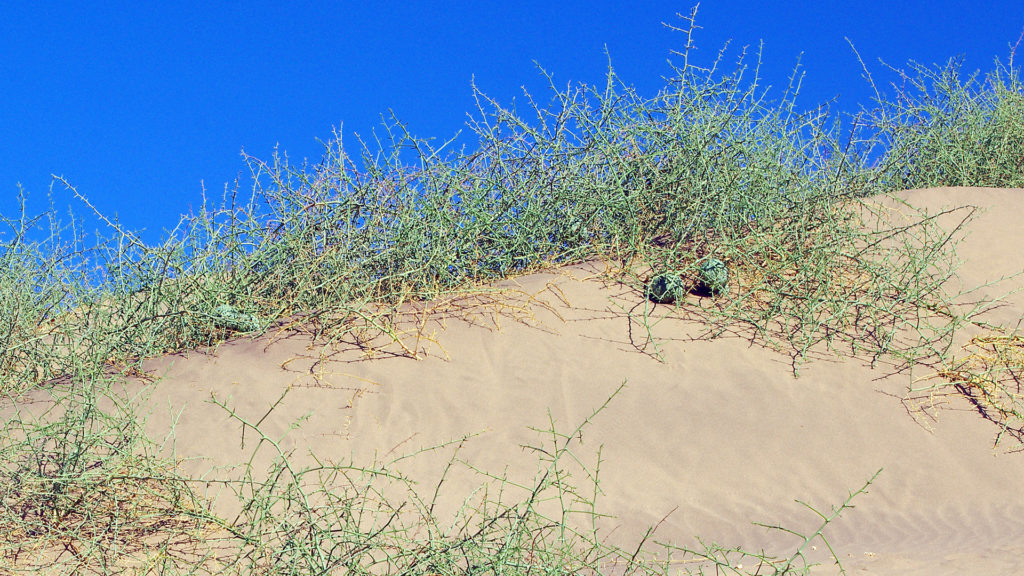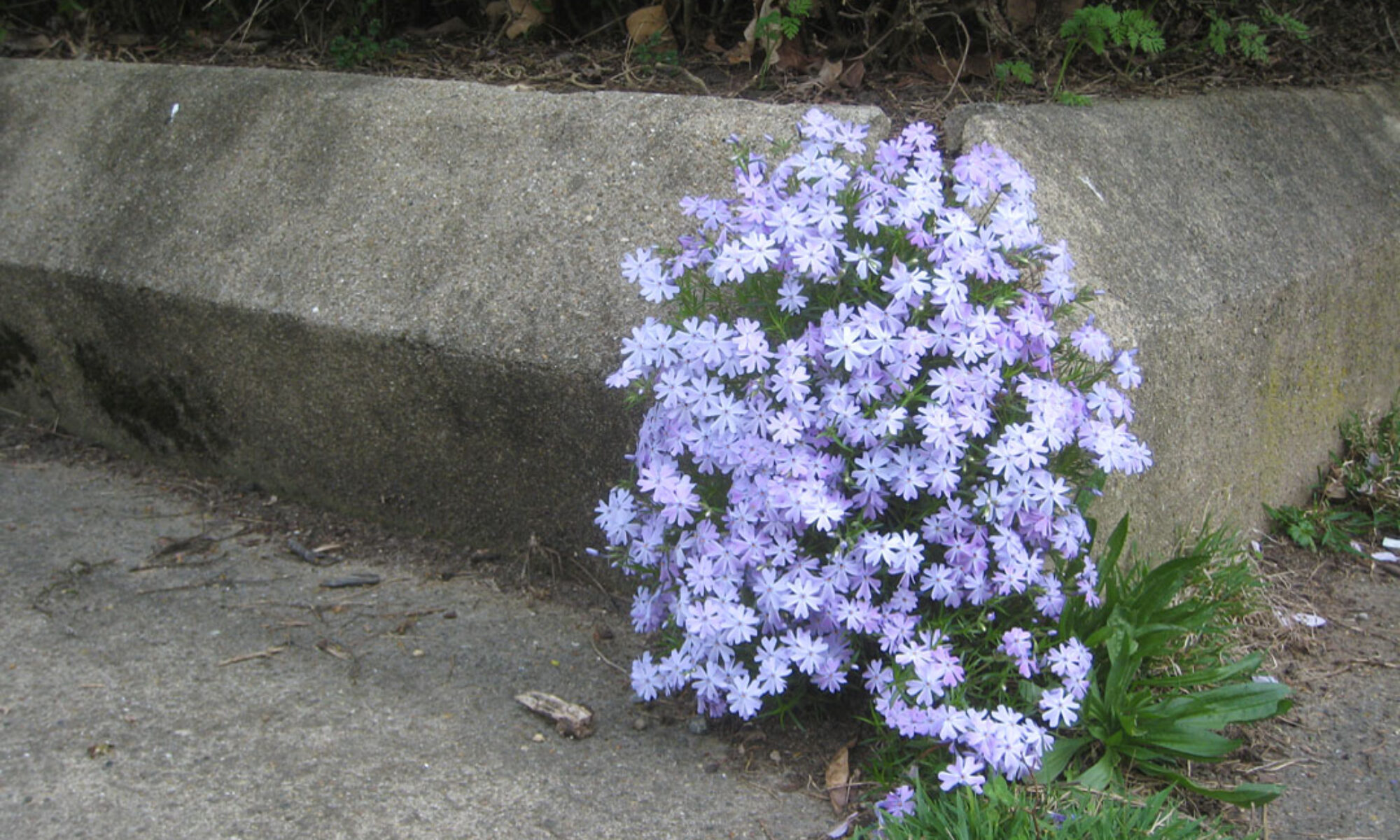The exterior of the !Nara melon is so unappealing that its scientific name includes an editorial comment: acanthosicyos horridus.
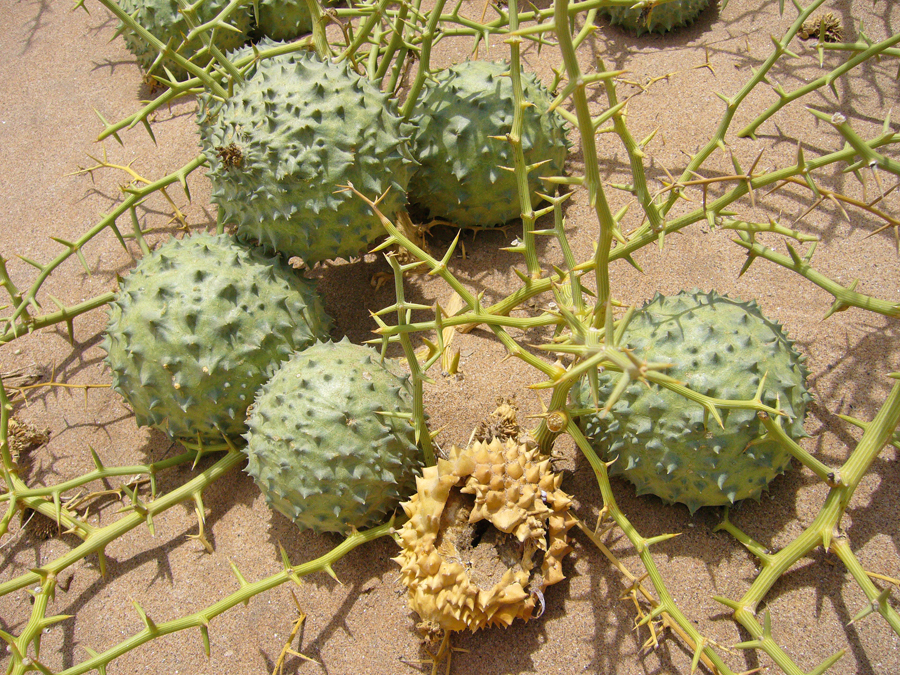
But the !Nara shrub – the ! indicates a clicking sound in the Nama language – and the melon it produces are essential to the Namib Desert. It’s called a keystone species, one whose influence on the ecosystem is so important that its absence might cause collapse.
Fossils suggest that the plant is more than 1000 years old, enough time to adapt to desert conditions. It has thorns but no leaves, protecting it from the desert sun. Its branches may grow 15 feet tall to adjust to the desert’s shifting sands, and it provides food for many desert inhabitants: beetles, gemsbok, ostriches, and the Nama people. Ostrich grass and Bushman grass, sheltered by the shrub, sometimes grow on the same mound. Botanically it’s related to the cucumber, and reports suggest that it tastes like an avocado or like a cross between a cucumber and a pineapple. The seeds are edible, and the fruit can be dried and stored for several years.
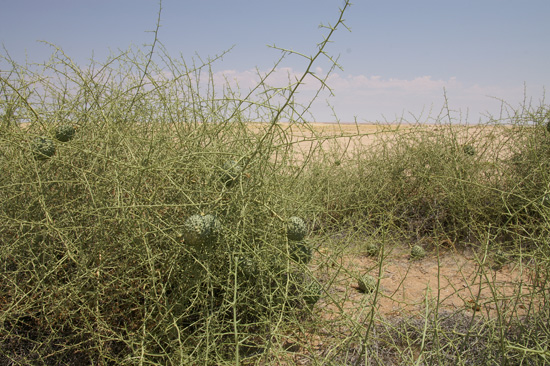
Ironically, the !Nara shrub is not considered a true desert plant. It can survive years without rain because it grows only where its very long tap roots – as long as 150 feet – can find a water channel underground.
Our guides showed us two true desert plants. The first, the dollar bush, is a succulent with a delicate white bloom. When the wind shifts, the dollar bush is quickly covered over by sand.
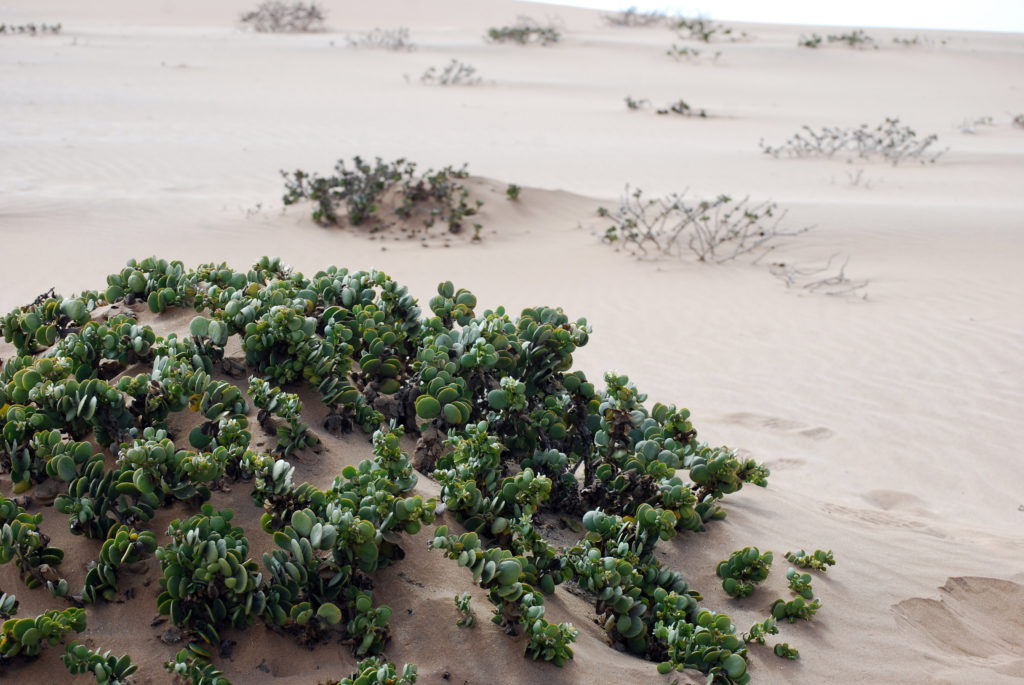
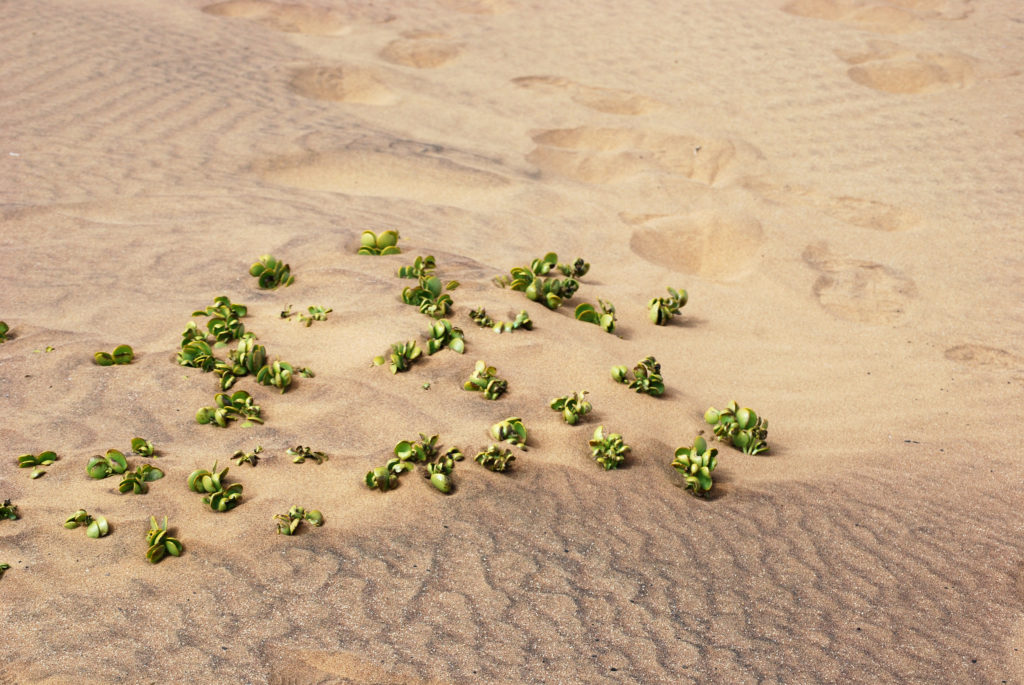
The second is the pencil bush. It, too, has a white flower. It’s sturdier than the dollar bush and provides food and shelter for desert animals like the horned adder or namaqua chameleon. Shifting sand will kill it, though.
If the !Nara shrub is covered with sand, its branches will grow longer, keeping the plant alive, providing more food and shelter to other species. Because its roots run deep, it can survive the challenge.
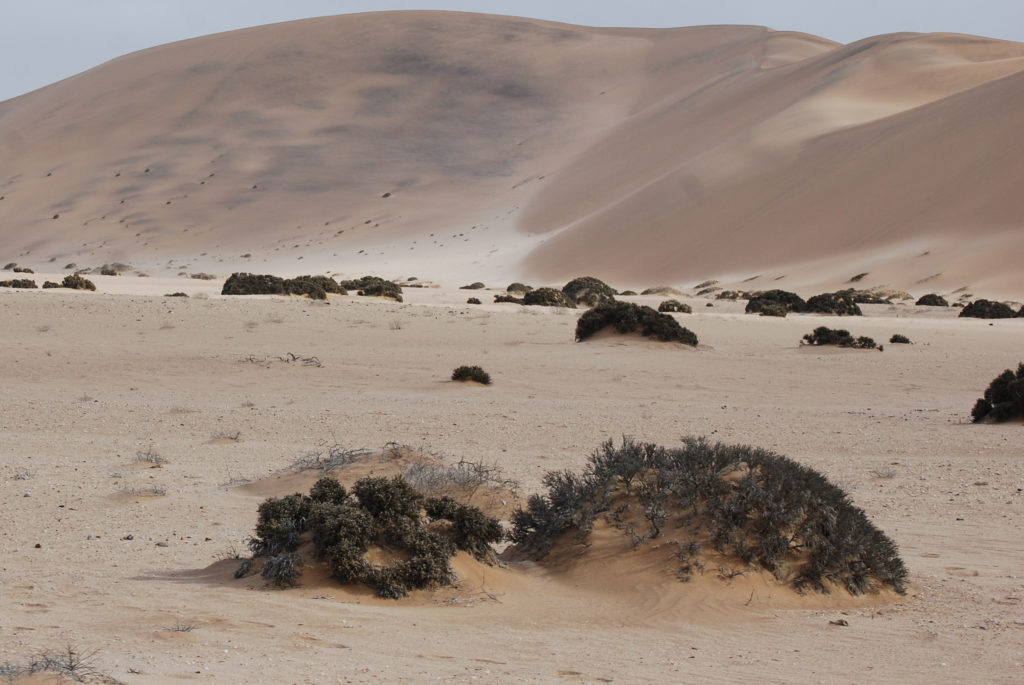
People of faith may see a metaphor in this. God provides what we need as we try to bear fruit in the wilderness. It’s up to us to develop roots that stay connected, though.
